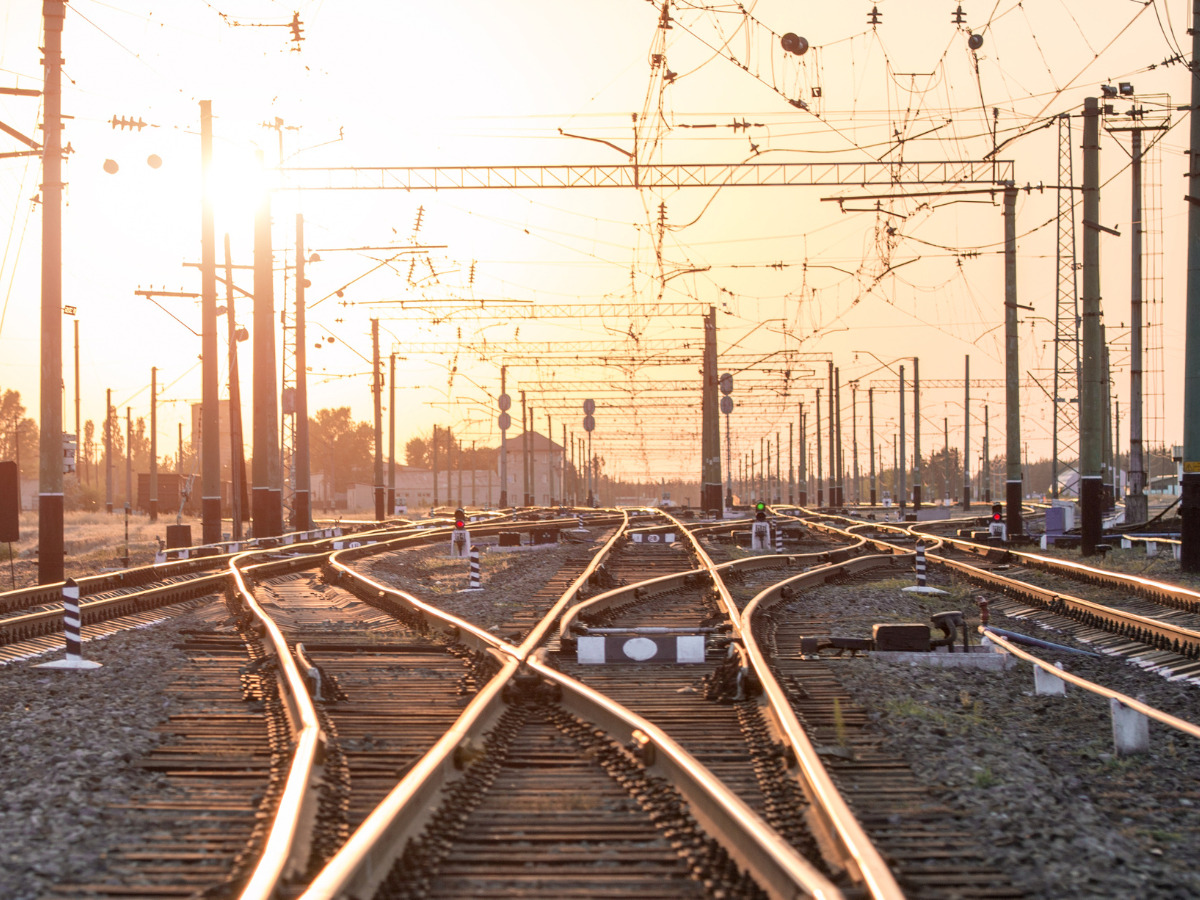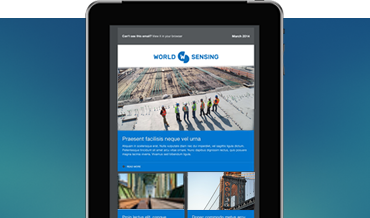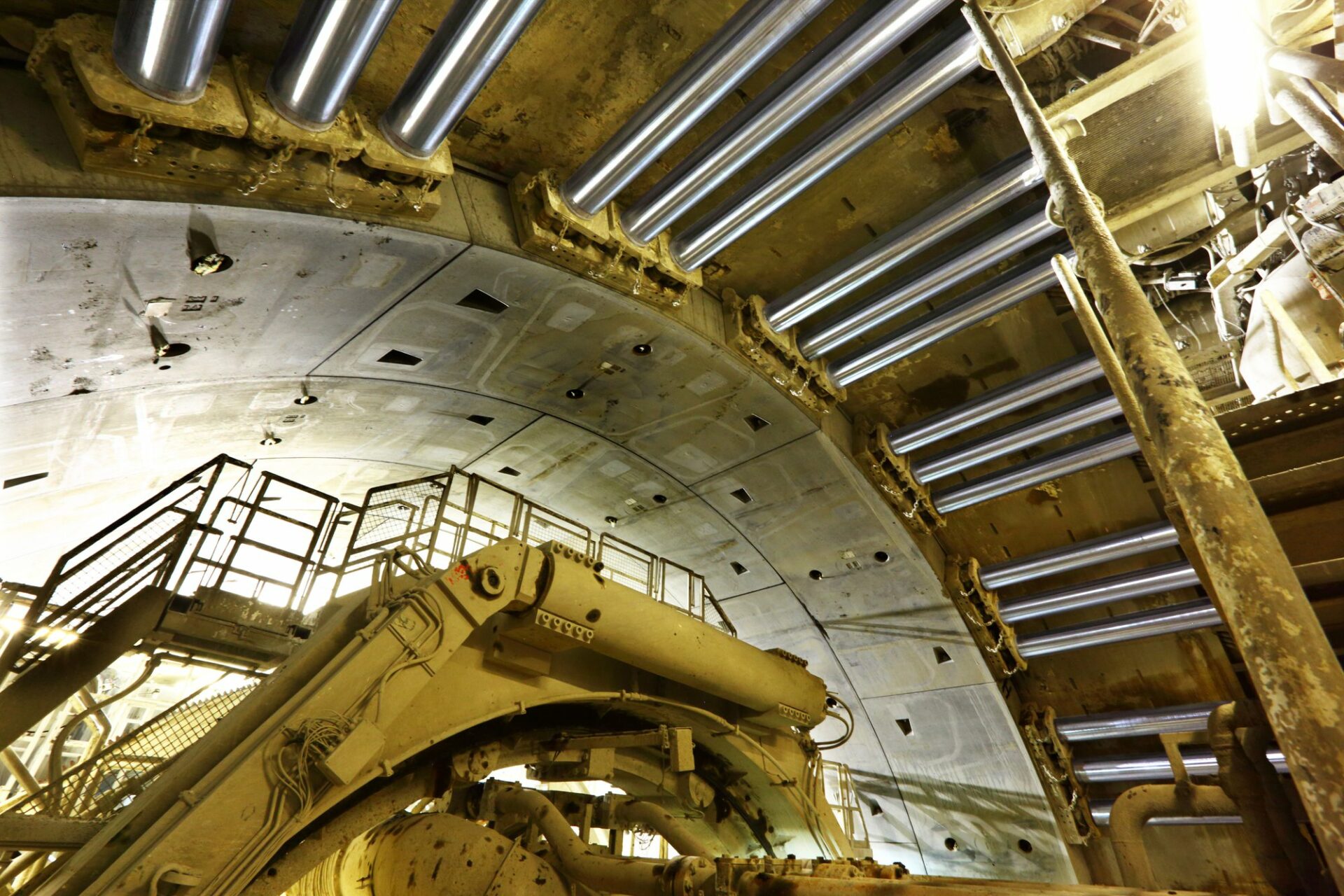IoT Monitoring in Large Scale Projects – An interview with Sam Buckley by Railway News
Railway News interviewed Sam Buckley, a Technical Sales Specialist at Worldsensing about the benefits of using IoT monitoring in large-scale rail projects and its ability to increase the reliability of decision-making for risk management.
Questions
What is the role of Internet of Things (IoT) monitoring within the rail sector?
We’ve talked Missing something small could potentially lead to a problem or even worse an accident, no?
We’ve talked What are some of other benefits of taking the IoT route?
How popular is this technology in the sector – what’s uptake like?
We’ve talked about the hardware, but what about the importance of good software when monitoring a large-scale project?
Another point we wanted to discuss with you was how does IoT monitoring support sustainability?
Having worked in the sector for some time, what are the biggest learnings you’ve had from large deployments?
What is the role of Internet of Things (IoT) monitoring within the rail sector?
Sam Buckley: Connecting geotechnical and structural data obtained from devices such as data loggers and sensors remotely is really important to the rail sector for many reasons.
Many railways are very old – take the UK for example – and need to be monitored, but it’s not just existing infrastructure we have to check.
Construction of new infrastructure needs to be monitored too. For example, if you’re excavating a new tunnel under an urban area, the space you are excavating can significantly affect the ground above it, you may also need to ensure the ovalisation of the excavation envelope is not excessive or there’s a risk of collapse. Monitoring is therefore critical.
You can also find cost savings during construction through the use of IoT monitoring. As an example, data can show you that perhaps there’s less movement in an area than expected, enabling engineers to tweak designs and spend less money reinforcing the area – or potentially using less concrete, offering a more sustainable build.
Going back to safety, IoT monitoring can help to protect survey staff. Manual monitoring involves putting your staff directly into dangerous environments – if you’ve got a track with an electrified line, or really steep embankments, people are at risk of getting injured.
When I joined this industry six years ago, I used to do a lot of manual monitoring of London Underground and Network Rail embankments, specifically looking at ground conditions and potential landslides.
Generally, this would involve carrying heavy pieces of equipment down steep embankments to look for slope deformation. In these environments, colleagues would often lose their footing on the way to the monitoring zone, I recall one ended up having to take six weeks off site work with an injured ankle.
Now we have reliable ‘fit and forget’ telemetry technology to minimise how often we have to put people in potentially hazardous environments.
I’m guessing with manual monitoring there’s also the issue of human error or human limitations shall we say. Missing something small could potentially lead to a problem or even worse an accident, no?
Sam Buckley: That’s such a good point. One of the problems of manual monitoring is that the same location is only monitored a few times each week, so you only ever get brief snapshots in time.
There is a risk that if you take a single data point at the wrong time it might look like everything is fine. But actually, the next day it suddenly spikes up before coming back down, and of course by the time of your next reading, you’ve missed all that critical data informing you that ground conditions reached unsafe levels.
Often a site will be monitored by a variety of people and when that happens different figures may be recorded as opinions differ. Take an extensometer, a precision instrument to look at vertical ground movement. You’re literally reading a tape measure that’s monitoring sub surface magnets, and you have to decide how much things have moved. It’s not all that clear cut and the conclusion you come to might not be the same as that of your colleagues.
You might also miss something if you’re distracted, or say the weather is really bad. What if you miss a key bit of data you need, read the wrong instruments, or write down the wrong measurements? There’s a significant risk of human error from manual monitoring.
What are some of the other benefits of taking the IoT route?
Sam Buckley: There’s also the fact that IoT monitoring enables you to easily produce high quantities of data. You could cover an embankment or track sleepers with hundreds of tilt metres for example, which will transmit data to a single platform to give you a much more detailed picture of what’s happening on the ground with the geotechnics.
This makes the technology perfect for large scale infrastructure projects too. With projects like HS2, California High-Speed Rail, the Grand Paris Express and the Delhi to Chennai high-speed rail network it would be almost impossible to monitor everything that’s happening with a team of people. But if you have remote, cost effective, reliable, long-lasting devices that can obtain data over a really long period of time then you get a complete picture across a very large area. You can also get readings as often as you want – every day, hour or minute. So, with IoT monitoring, you can capture data as often as you need over as large an area as necessary. This means, especially in critical places where trains pass every few minutes or there’s a section of track that’s susceptible to landslides, you’re going to be much more informed as to whether something is going to happen.
The key point to all this is that decision makers’ ability to make informed decisions is greatly enhanced by the frequency and the quantity of the data they’re getting.
How popular is this technology in the sector – what’s uptake like?
Sam Buckley: The technology’s been around a few years, but widespread adoption is actually relatively new. Just a few years ago most of the work was done manually where people would go onto site to survey and take readings every few days. It’s been in the last three to four years that it’s really taken off and we’ve seen high profile rail projects turn to IoT monitoring. People now see the advantages of the technology, plus it’s massively increased not only in affordability but also what it’s capable of.
We’ve talked about the hardware, but what about the importance of good software when monitoring a large-scale project?
Sam Buckley: You need to have robust, reliable software for IoT monitoring, especially on large scale projects where you need to manage a lot of different devices. If you’ve got thousands of kilometers of track with monitoring devices, then the software has to be able to manage that.
We have a cloud system that enables customers to change device monitoring parameters remotely, as well as download or forward data that’s been gathered. The software must provide a customer friendly user experience because there’s so much data available.
Another point we wanted to discuss with you was how does IoT monitoring support sustainability?
Sam Buckley: There’s several ways – firstly the devices are robust. For example, our data loggers, laser distance meters, tilt meters have been made in such a way that they can monitor every few hours for up to ten years with one set of batteries. I have been involved in large projects where sensors are connected to data loggers using hundreds of km of cables. IoT massively reduces and in some cases eliminates the need for cables, saving costs and resources.
So, sustainability wise, you don’t have to buy new devices the whole time, because they are robust enough to cope with long durations, extreme temperatures such as up to + 80C and as low as -40 C, and as these are IP67 rated – also as highly resistant to water.
Furthermore, as the battery lasts for in excess of ten years you avoid costs related to equipment replacement and if you have a project that lasts for two years, they can be reused on another project.
Another plus regarding sustainability is the carbon savings you make by not having to send teams of people out to locations, so there’s some great environmental savings you can make this way.
Having worked in the sector for some time, what are the biggest learnings you’ve had from large deployments?
Sam Buckley: In terms of personal learnings, I think few industries have changed as much in such a short space of time as the geotechnical and structural monitoring world. Looking specifically at rail, the skills I needed before – to go on site, look at a tape measure to see if something’s changed or get a device and download a reading– have changed in such a way that I needed to re-skill. Now you also have to be an expert in radio communication, in configuring devices and understanding software as well. You need to understand the geotechnics, but also how all the devices work, which is a very different skill set to manual monitoring.
As an organisation, we learned that sometimes near real-time data isn’t enough and that there are situations in rail that require super real-time monitoring of two seconds rather than two minutes. When gathering data, it can usually take a few minutes before information is transferred from a device to a customer’s software dashboard. Usually this is perfectly fine, but if you’ve got a landslide that’s just happened and a train coming towards it at 100 miles an hour you need to know straight away.
In response to this we developed an event detection solution. This enables you to set parameters such as if there’s movement of a few fractions of a degree, within two seconds it will tell you straight away so you can issue alerts.
Regarding dangers, another thing we’ve learnt is the value of IoT in critical but dangerous places that need to be monitored. Not just embankments, as I mentioned before, but places that are almost inaccessible – tracks, tunnel roofs, mountainous areas… with this technology you don’t have to worry about the complexities and expense of accessing these places safely.


